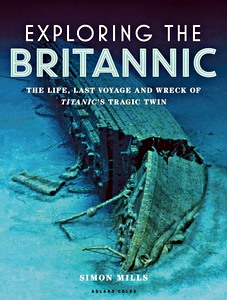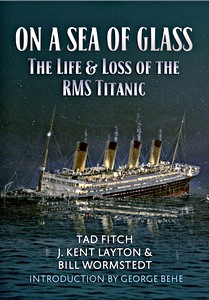Exploring the Britannic : The life, last voyage and wreck of Titanic's tragic twin
Launched in 1914, two years after the ill-fated voyage of her sister ship, RMS Titanic, the Britannic was intended to be superior to her tragic twin in every way. But war intervened and in 1915 she was requisitioned as a hospital ship.
Just one year later, while on her way to collect troops wounded in the Balkans campaign, she fell victim to a mine laid by a German U-boat and tragically sank in the middle of the Aegean Sea.
There her wreck lay, at a depth of 400 feet, until it was discovered 59 years later by legendary explorer Jacques Cousteau. In 1996 the wreck was bought by the author of this book, Simon Mills. Exploring the Britannic tells the complete story of this enigmatic ship: her construction, launch and life, her fateful last voyage, and the historical findings resulting from the exploration of the well-preserved wreck over a period of 40 years.
With remarkable sonar scans and many never before seen photographs of the wreck, plus fold-out sections of the original Harland & Wolff ship plans, not previously published in their entirety, Exploring the Britannic finally details how the mysteries surrounding the 100-year-old enigma were laid to rest, and what the future might also hold for her.
Caractéristiques
| Auteur : | Simon Mills |
|---|---|
| Présentation : | 272 pages, 25.5 x 19.5 x 2.4 cm, relié |
| Illustration : | abondamment illustré avec des photos en N&B et couleurs |
| Editeur : | Adlard Coles (GB, 2019) |
| ISBN : | 9781472954923 |

Exploring the Britannic : The life, last voyage and wreck of Titanic's tragic twin
Langue : anglais
Disponible sur Amazon - paiement sécurisé et livraison rapide
Acheter sur Amazon FRAcheter sur Amazon BE
Acheter sur Amazon CA












